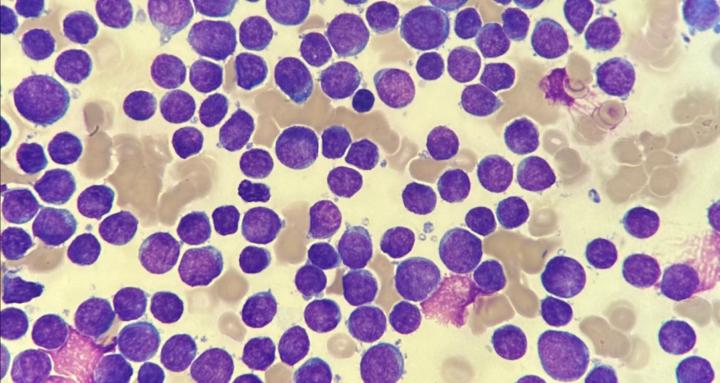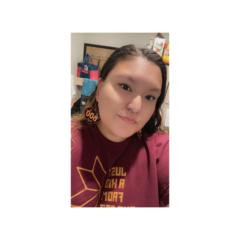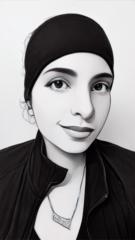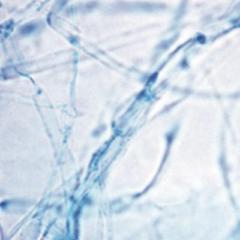
Write something
Pinned
[START HERE] Welcome to the Microscope Views Community 🦠🔬😋
👋🏾 Hello, my little Gang of Nasties! I’m really glad you’re here. This space was made specifically for students and future lab professionals who are trying to study smarter, stay motivated, and finally pass the ASCP exam without losing their minds. Whether you’re still in school, prepping for boards, or coming back after a break—this is your space. 👇 Introduce yourself to our FREE Community: 1. What’s your name? 2. Where are you in your lab journey (Student? Graduated already?) 3. Which department is your biggest struggle? 4. Which department is your favorite? I’ll go first… My name is Marilyn, aka @marilynthescientist 👩🏾🔬 I’m a Clinical/Medical Laboratory Scientist with 10 years of experience in the field. 💉 I’ve worked everywhere—from tiny Critical Access Hospitals to busy Level 1 Trauma Centers. 🧳 6 of those years were spent traveling across the U.S. 🩸 Currently, I’m holding it down as a Blood Bank Supervisor in California. This space is here for us to learn, laugh, rant, and master the lab world together. No dumb questions, EVER! 📲 Follow me on socials if you want extra lab tips, rants, and ratchet breakdowns: Instagram | TikTok 🧬 If you ever have questions—even the “silly” ones—DM me or post them in the group. 😤💅🏾
Microbiology Study Tip: Breakdown Bacteriology, Mycology & Parasitology
Greetings My Little Gang of Nasties! @Tyneatrious King Posed a great question in the group. Since Microbiology is a huge subject, and the smartest way to study is to break it into major categories and then master the distinguishing features of each. Here’s how I’d suggest you prepare on top of utilizing using MediaLab/LabCE or the ASCP BOC Exam Simulator questions to reinforce the theory: 🦠🧫🧪 BACTERIOLOGY Focus Areas: - Gram-positive vs Gram-negative (cell wall structure, staining, antibiotic susceptibility) - Morphology (cocci vs. bacilli) - Biochemical reactions (Catalase, coagulase, oxidase, TSI, etc.) - Pathogenic mechanisms (toxins, virulence factors) - Clinically important bacteria (Staphylococcus, Streptococcus, Enterobacteriaceae, Non-Fermentative Bacilli, Mycobacteria, etc.) Study Tips: - Master the Gram stain flow chart. - Learn “differentiating tests:” the one test that separates similar bugs (e.g., catalase for Staph vs Strep, coagulase for S. aureus vs coagulase negative staph). - Practice with TSI and other biochemical slants until interpretation is second nature. 🍄 🍄🟫🥐🥖🍞 MYCOLOGY Focus Areas: - Yeasts vs molds vs dimorphic fungi - Microscopic morphology (hyphae, spores, budding patterns) - Fungal culture characteristics (agars, colors, specific characteristics on the plate) - Clinically relevant fungi (Candida, Cryptococcus, Aspergillus, Histoplasma, Blastomyces, Coccidioides, etc.) - Stains (India ink, KOH prep, silver stain) Study Tips: - Compare systemic dimorphic fungi side-by-side (location, morphology, diseases). - Use flashcards with images of fungal structures, the ASCP is often image-heavy! - Group fungi by disease type: superficial (tinea), subcutaneous (sporotrichosis), systemic (Histoplasma), opportunistic (Candida, Aspergillus). 🦟🪲🪳🕷️ PARASITOLOGY Focus Areas: - Protozoa vs helminths - Life cycles (hosts, vectors, transmission)*** INCREDIBLY IMPORTANT - Common parasites and their disease states (Giardia, Plasmodium, Toxoplasma, Entamoeba, Ascaris, Strongyloides, Schistosoma, etc.) - Lab ID (ova, trophozoites, cysts in stool; blood smears for malaria; serology - Again, ASCP is IMAGE HEAVY)
📚 FREE RESOURCE DROP — MLS Review Book by Robert Harr
Hellooooo my little Gang of Nasties!😈😜 If you’ve been feeling overwhelmed about where to even start with studying for the ASCP exam — don’t trip. I got you. This is one of the most widely used study resources out there AND single handedly the reason why I passed my MLS(ASCP) exam: The Medical Laboratory Science Review Book by Robert Harr (PDF version). 🧪 It’s packed with: - Review questions by subject - High-yield explanations - Content that closely mirrors what you’ll see on the ASCP exam (Both MLS and MLT) 📌 Use it to: - Track weak areas - Practice daily questions - Get used to ASCP-style phrasing (yes, the ones that feel like they’re intentionally tryna trick you 😭) Whether you’re just starting or reviewing one section at a time — this belongs in your toolkit. 🔗 Download it here AND BOOKMARK IT on your phone and other devices! https://samicrobiology.wordpress.com/wp-content/uploads/2019/01/mls-review.pdf ✅ Already feeling stuck? Or not sure how to use this resource effectively? Book a 1:1 call with me and I’ll help you map out a study plan that works for your schedule, learning style, and brain. 📅 https://calendly.com/microscopeviewsyt/45min Let’s get YOU ALL certified. We not doing this alone. 💪🏾🧬
Labce question
Hi! I was wondering what we should be scoring in the labce simulator?
Chemistry Made A LOT Easier and Digestible😋🧪⚗️
Greetings my Little Gang of Nasties 😈😜 Let’s talk about one of the most intimidating sections on the ASCP exam: Chemistry. Well…. I mean all of them are intimidating LMAO! The good news? If you break it down into 4 major content areas and attack them piece by piece, it becomes SIGNIFICANTLY more manageable. Before you begin studying ASCP questions, you should know that each sections tests for Biochemical Theory and Physiology, Test Procedures, Result Correlations and Disease Correlations: 🧪What *exactly* is BIOCHEMICAL THEORY? This is the science behind the molecules you’re testing: - The chemical structure and function of carbohydrates, lipids, proteins, and nucleic acids. - The pathways they move through (e.g., glycolysis, lipid metabolism, protein catabolism). - The reactions enzymes catalyze and how those reactions are measured in the lab. - How different compounds (like bilirubin, cholesterol, glucose) behave in the body and in assays. 👉🏽Basically: “What is this molecule, what does it do, and what happens chemically when we measure it?” 📚 Why this is SUPER HIGH YIELD AND IMPORTANT for the ASCP The ASCP doesn’t just want you to memorize test names. They want you to connect the dots: - Biochemical theory = how the test works (the principle behind the method). - Physiology = why we’re testing it (what’s happening in the patient’s body). - Together = interpret results in the context of disease. For example: - Glucose: Biochemical theory = measured via glucose oxidase method. Physiology = regulated by insulin/glucagon. In diabetes, failure of regulation = high glucose. - AST/ALT: Biochemical theory = enzymatic activity measured with substrate assays. Physiology = normally found inside liver cells. In hepatitis, cells die → enzymes leak into blood. 👉🏽 So when you see “biochemical theory and physiology” on a content outline, read it as: “Understand both how the test works chemically AND why it matters biologically.” 🧪What *exactly* is PHYSIOLOGY?
1-30 of 49

skool.com/microscope-views-free-6601
🧪🔬Helping Students Effectively Study For & Pass The ASCP Exam
Powered by






